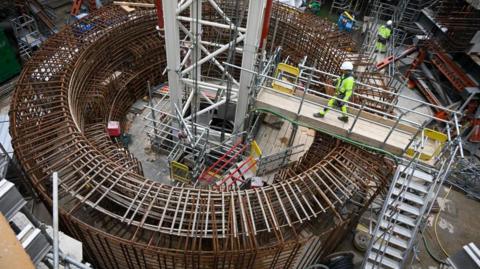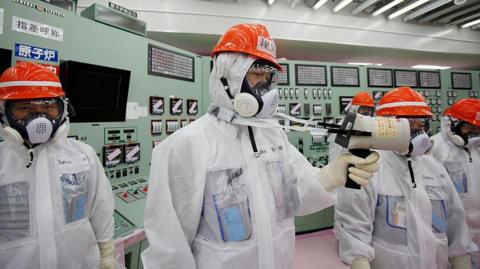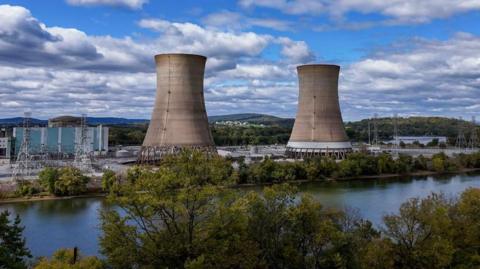But hunger for clean power is not just coming from governments. Technology giants are striving to develop more and more applications that use artificial intelligence.
Yet AI relies on data – and data centres need constant, reliable electricity. According to Barclays Research, data centres account for 3.5% of electricity consumption in the US today, but that figure could rise to more than 9% by the end of the decade.
In September, Microsoft signed a 20-year deal to buy power from Constellation Energy, which will lead to the reopening of the infamous Three Mile Island power station in Pennsylvania – the site of the worst nuclear accident in US history, where a reactor suffered a partial meltdown in 1979.
Despite its tainted public image, another reactor at the plant continued to generate electricity until 2019. Constellation’s chief executive Joe Dominguez described the deal to reopen it as a "powerful symbol of the rebirth of nuclear power as a clean and reliable energy resource".
Other tech giants have taken a different approach. Google plans to buy energy produced from a handful of so-called Small Modular Reactors or SMRs – a nascent technology intended to make nuclear energy easier and cheaper to deploy. Amazon is also supporting SMR development and construction.
SMRs themselves are being promoted, in part, as a solution to one of the biggest drawbacks facing nuclear power today. In western nations, new power stations have to be built to exacting modern safety standards. This, cobined with their sheer scale, makes them prohibitively expensive and complicated to build.
Hinkley Point C is a good example. Britain’s first new nuclear power station since the mid-1990s is being built on a stretch of remote coastline in southwest England.
It is meant to be the first of a batch of new plants to replace the country’s ageing reactor fleet. But the project is running some five years behind schedule and will cost up to £9bn ($11.5bn) more than planned.
It is not an isolated case. The US’s newest reactors at Plant Vogtle in Georgia opened seven years late, and cost more than $35bn – well over double their original budget.
SMRs are designed to solve this problem. They will be smaller than traditional reactors, using standardised parts that can be assembled quickly, at sites close to where the power is needed.
But while there are some 80 different designs under development globally, according to the International Atomic Energy Agency, the concept has yet to be proven commercially.


